AnkaraMap
August The city is located in the middle of a desert. 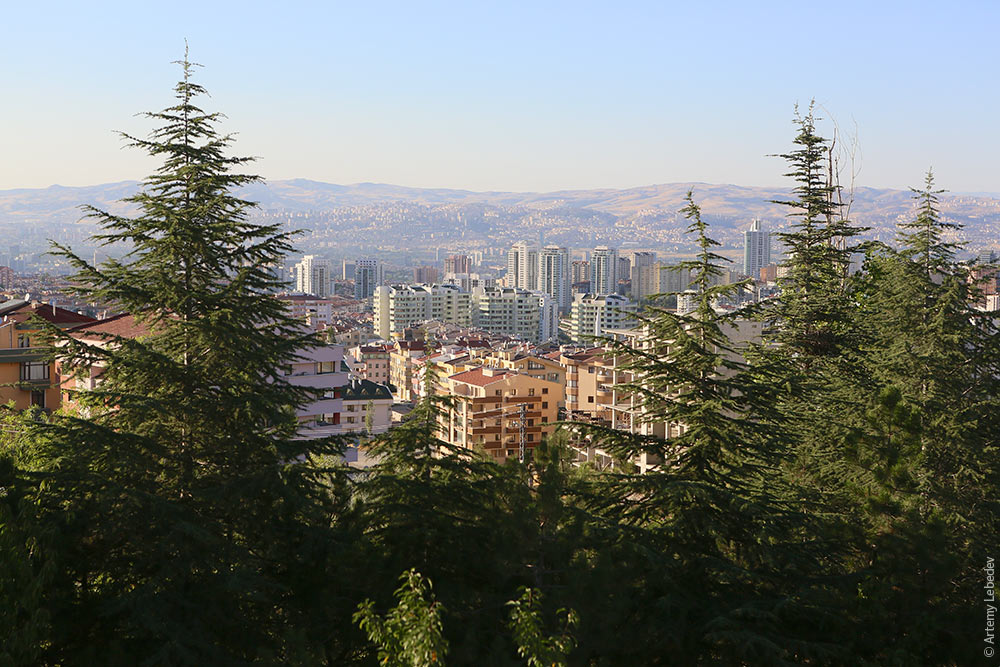 The buildings and greenery allow you to forget about the desolate landscape and monotonous sand dunes. 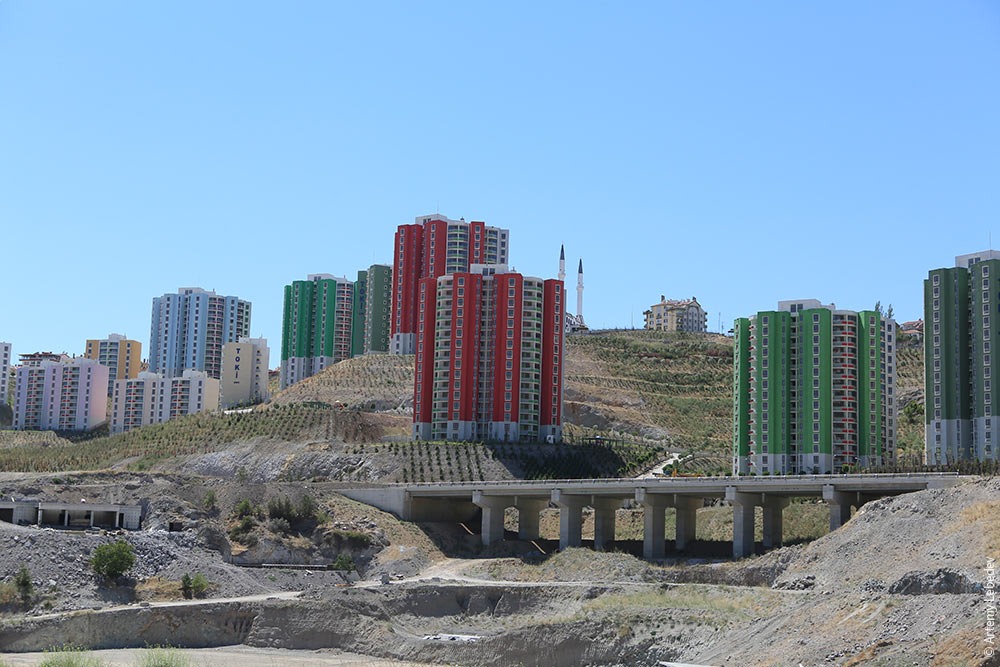 Downtown, the lampposts grow in arcs, creating the impression of driving through a whale skeleton. 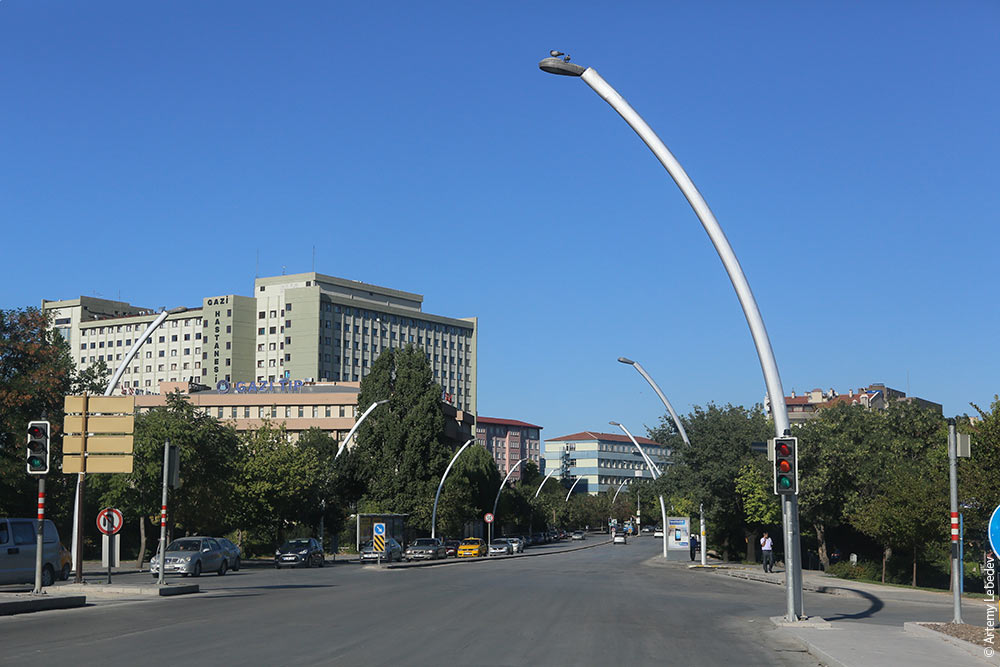 The capital’s typical bench, made of pipe of different diameters, looks ugly. 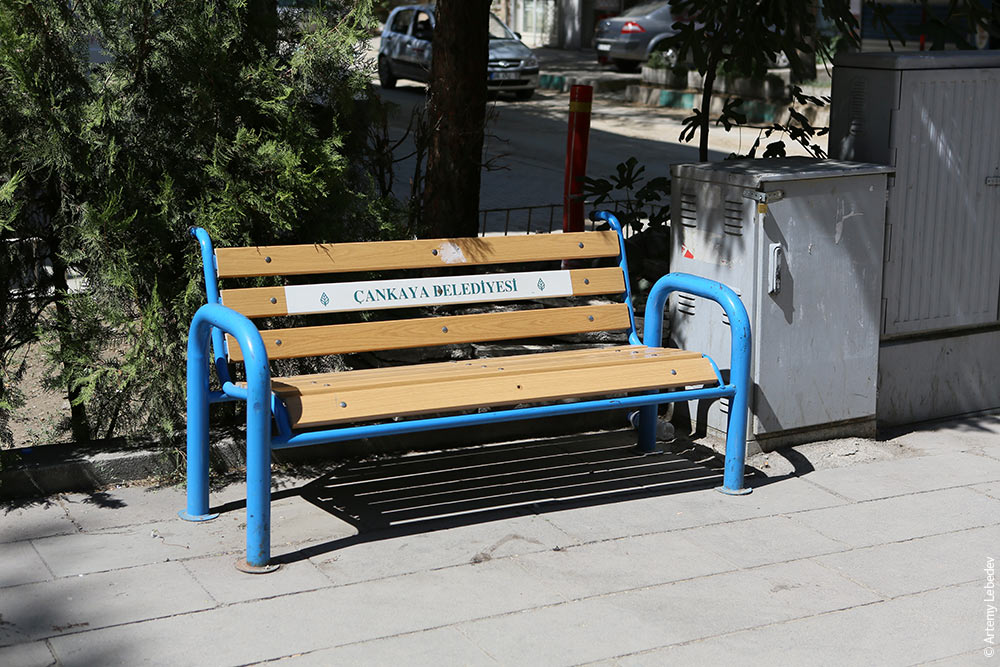 Directional signs resemble the old French model (like in Algeria or Togo), only without the signature pointed tip. 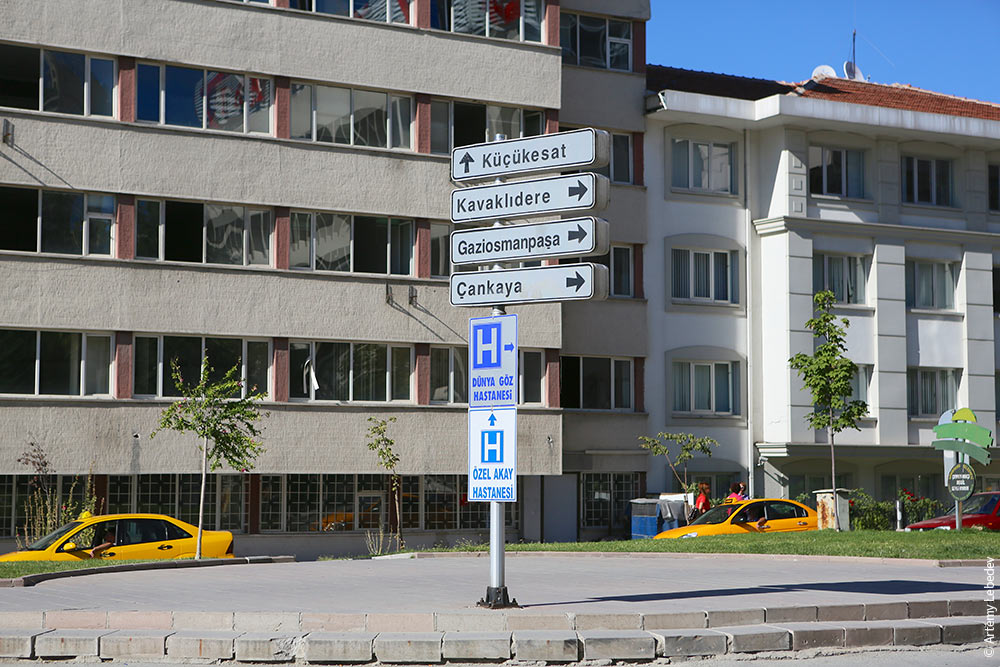 A street sign.  The post boxes are gigantic and have four mail slots—one on every side. They’re decorated with ethnic ornaments and look like they’re made of cast iron. Tap tap. Ew, plastic. 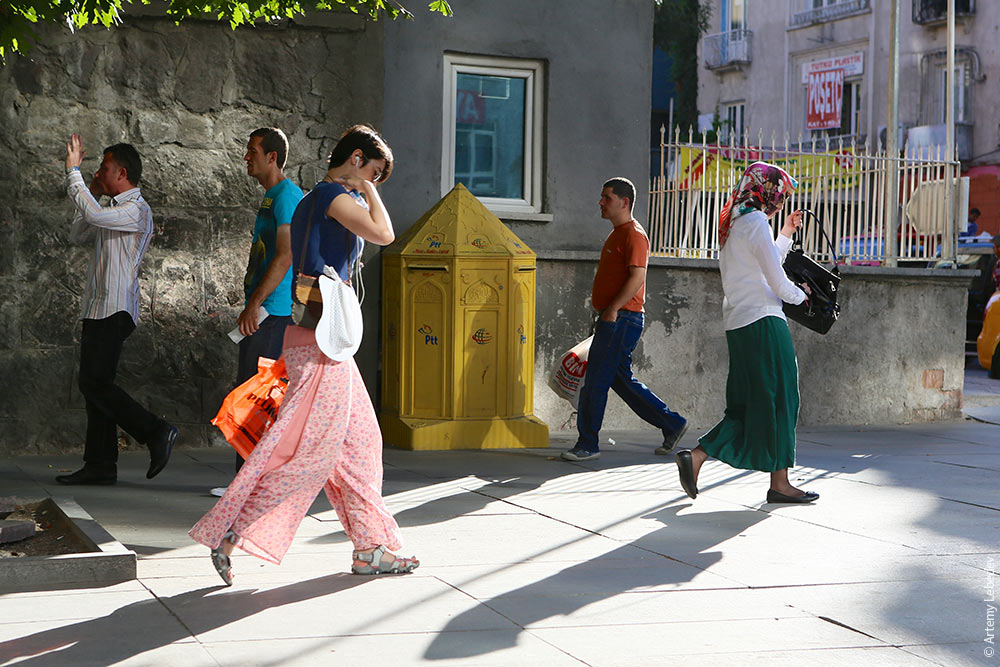 Taxis don’t drive around looking for clients; instead, they wait in special parking areas which exist in every neighborhood. 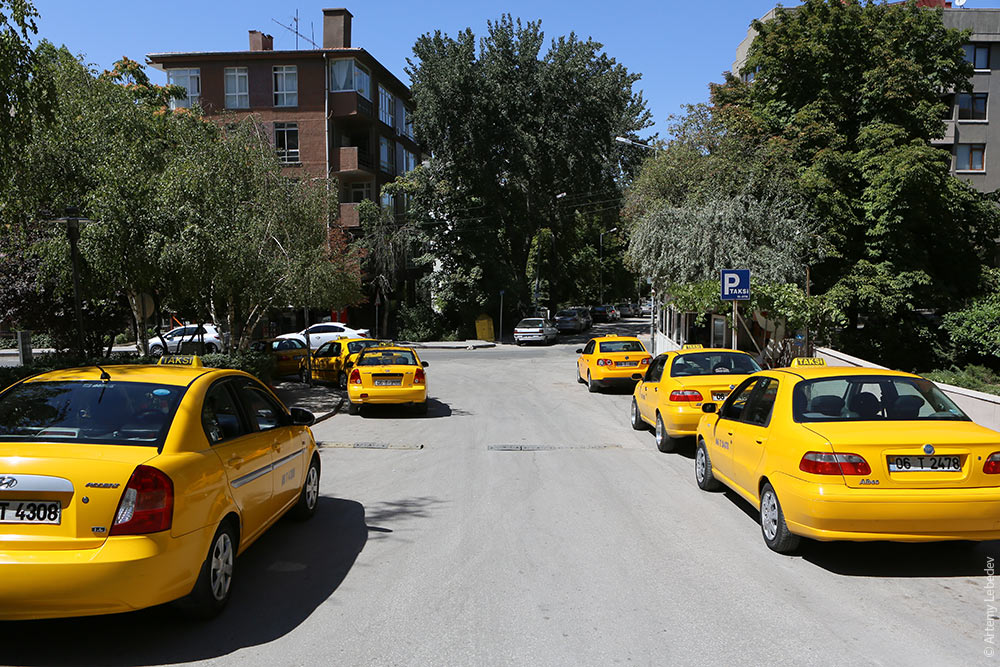 And there are taxi call boxes every hundred meters on the lampposts for those who are too lazy to walk three hundred meters. You press the button, and in a minute a car shows up. It’s unbelievably convenient and practical; I’ve never seen a taxi call system of this scale anywhere else (usually, they just set up one pillar with a call box in the central square and call it a day—like in Milan or Rostov). 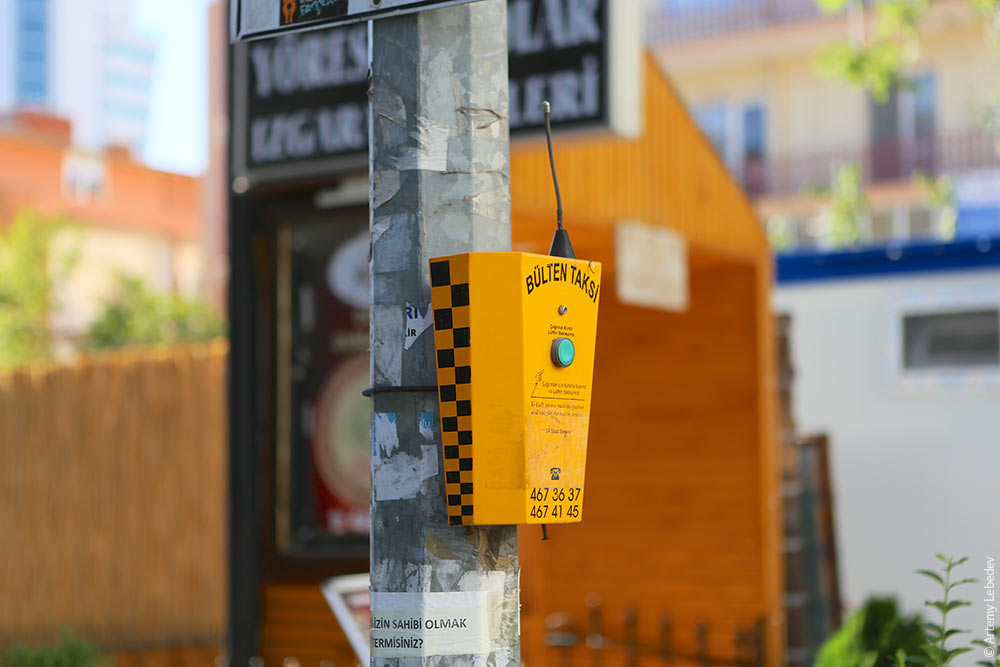 The city’s most astounding feature is the empty five-liter water bottles used to collect plastic caps from smaller bottles. They’re hung up with the same frequency as the taxi call boxes, sometimes on the same posts. 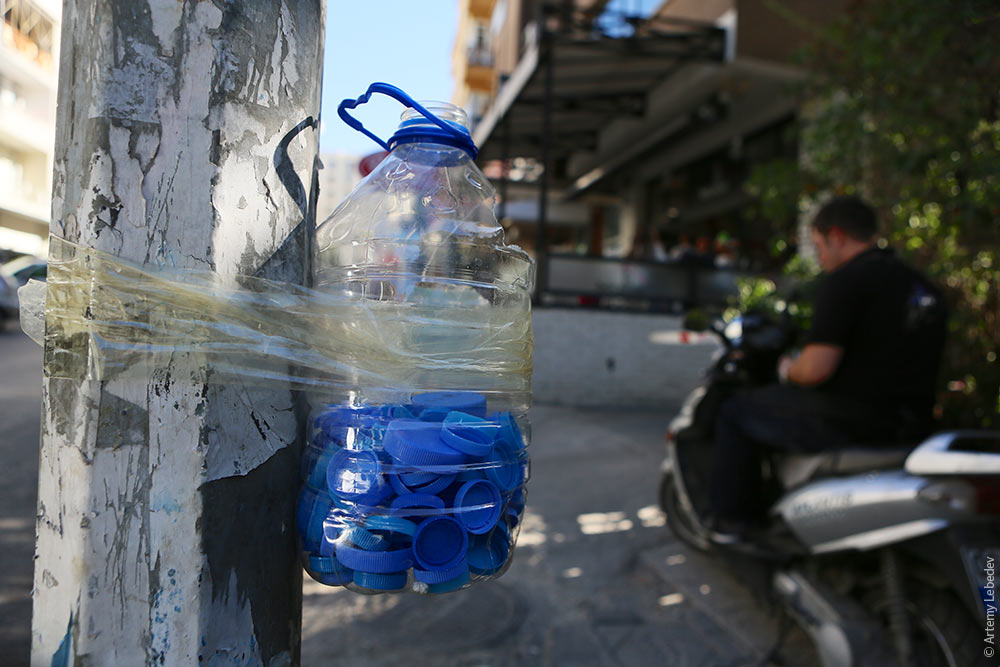 The reason is that bottle caps are a currency for the poor. One kilo of caps costs 8 liras. Kind-hearted people put their caps in the empty bottles instead of throwing them out, so that the disabled can collect them afterwards. The manufacturers, in turn, economize on plastic: on the left is a normal cap, on the right is a Turkish one. 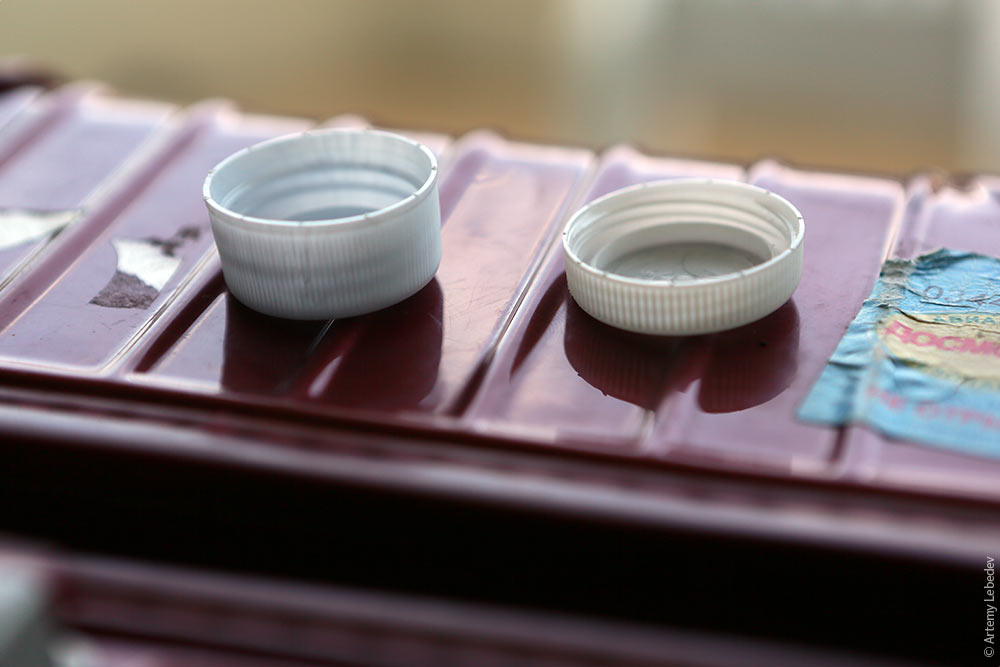 Part of the sidewalks in the city are separated from the roadway with bollards that resemble chess pieces. Like the post boxes, the bollards are made of plastic. 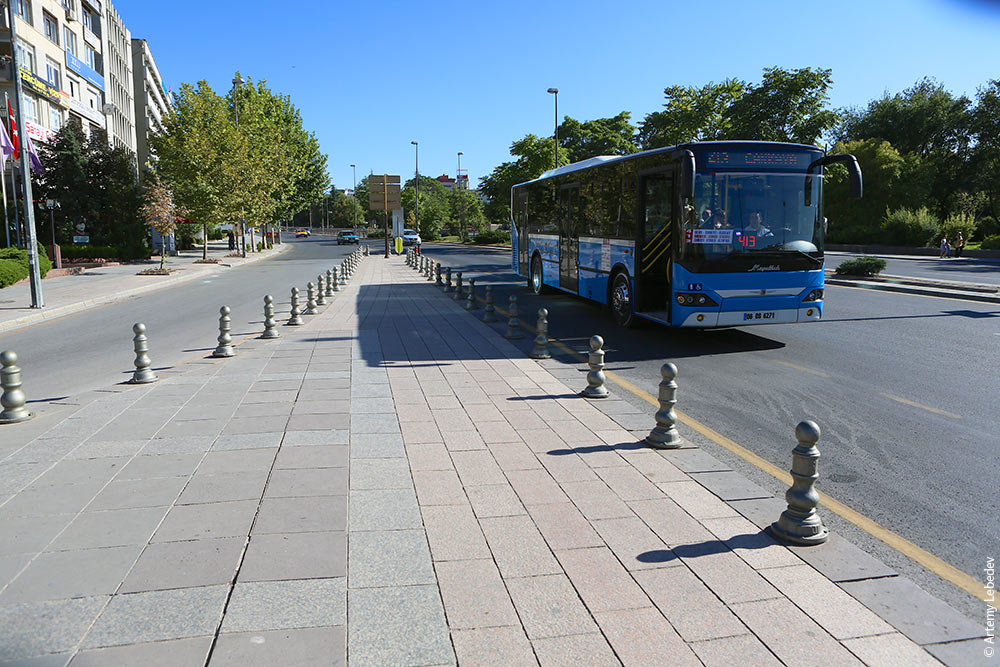 The rest of the sidewalks are set apart with little concrete mushrooms and spheres, which, one must assume, are better suited for the job than plastic. 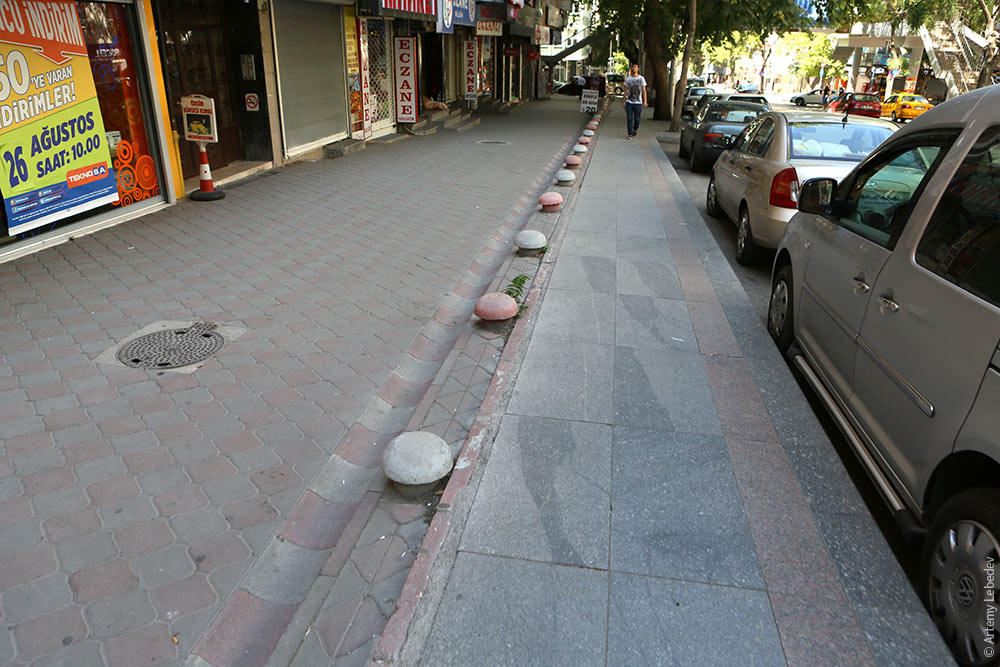 Trash cans are placed inside decorative wood cases, like in Ramallah. 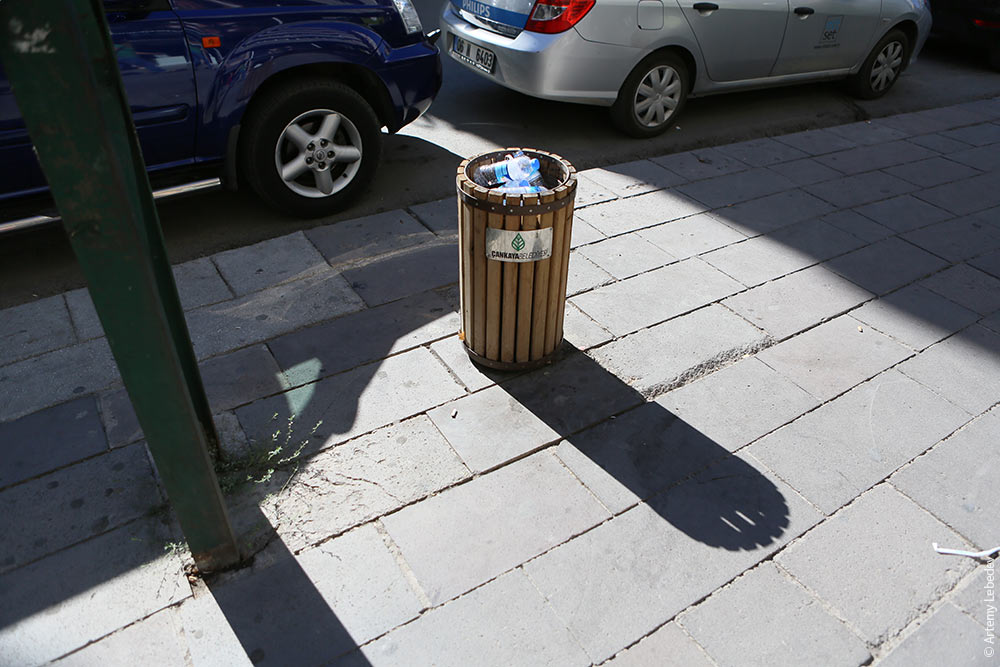 Half of the city’s attributes have gathered in one place: there’s a taxi call box, a cap collection bottle, a trash can hiding behind the post, and chess piece bollards in the background. 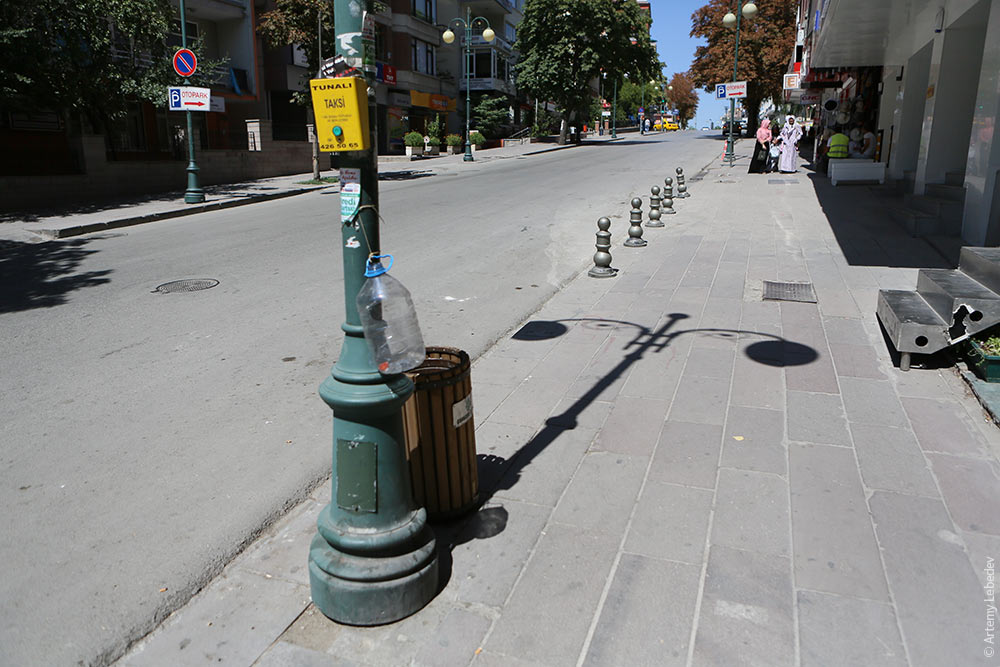 A paper recycling container. 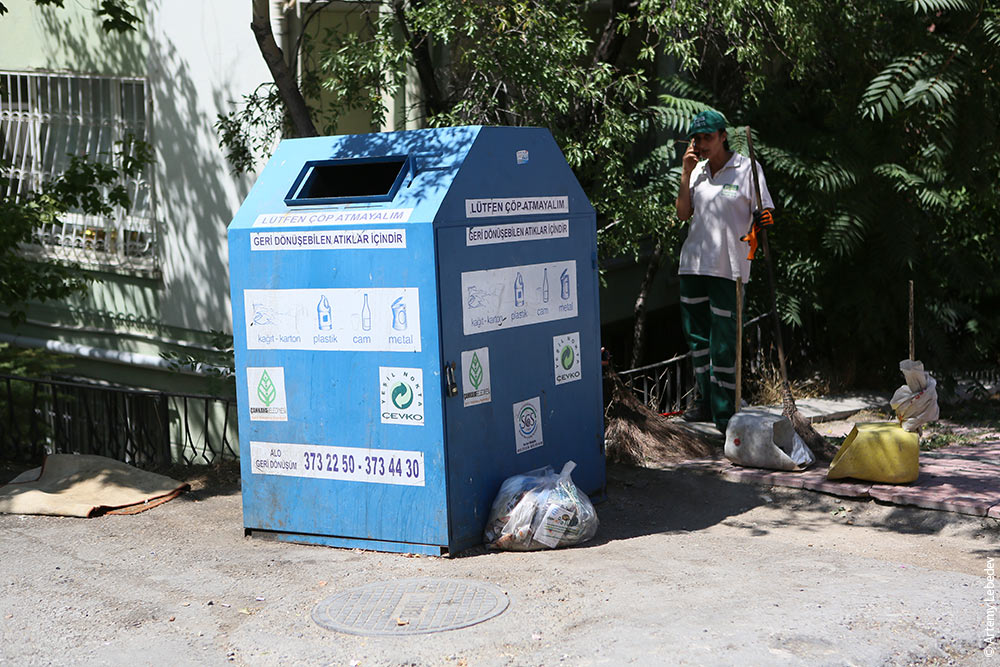 A glass recycling container. 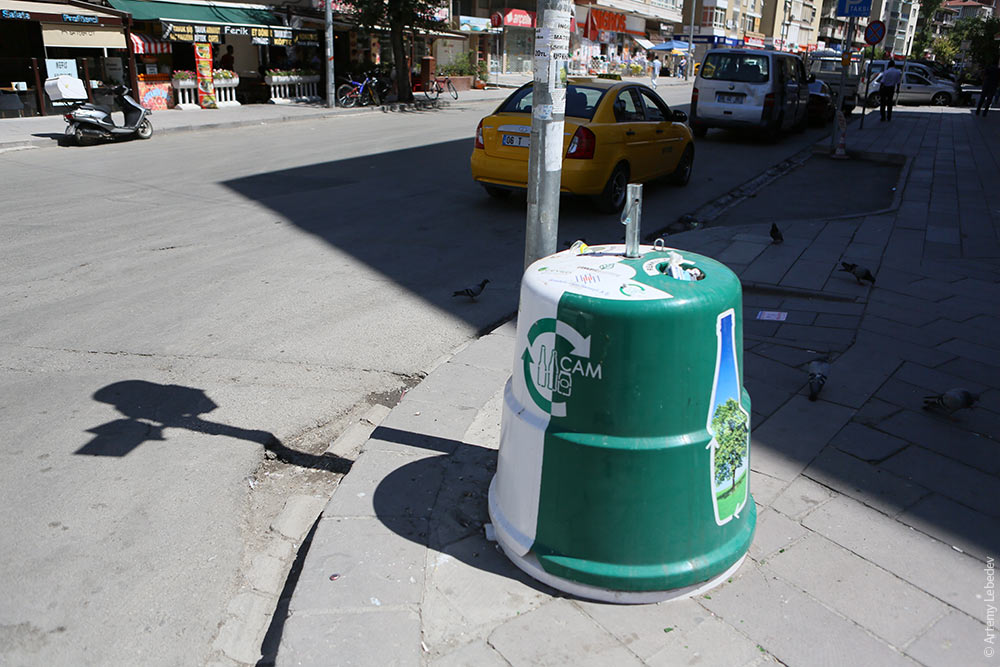 An example of poor urban planning: the underground garbage containers (which have a bunker-sized below-ground component) have been placed behind a barrier, making it a huge pain to get to them.  A typical billboard mounting structure. 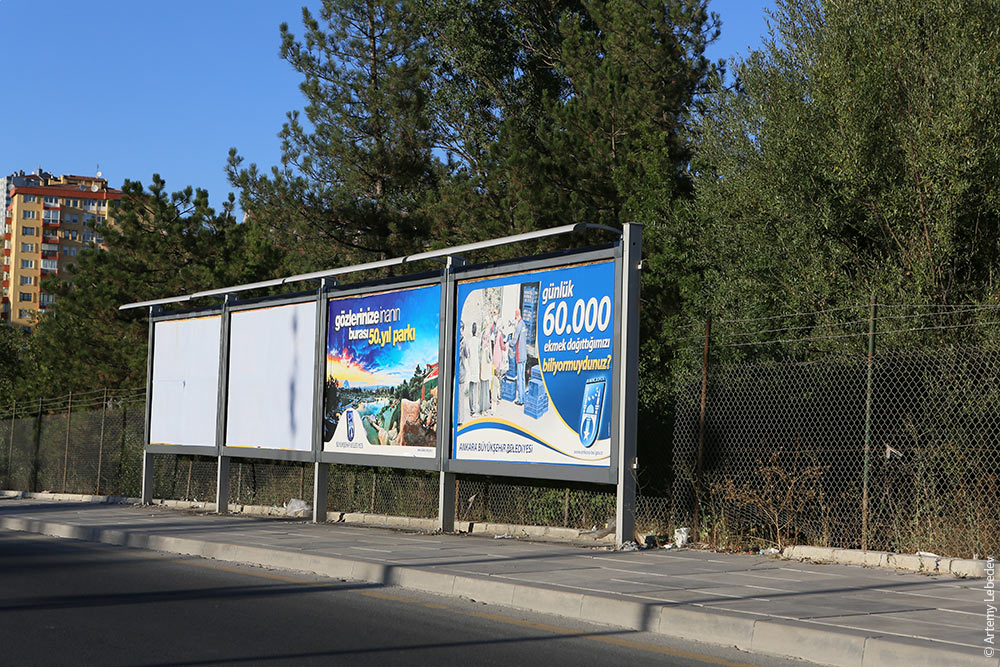 A house being demolished. 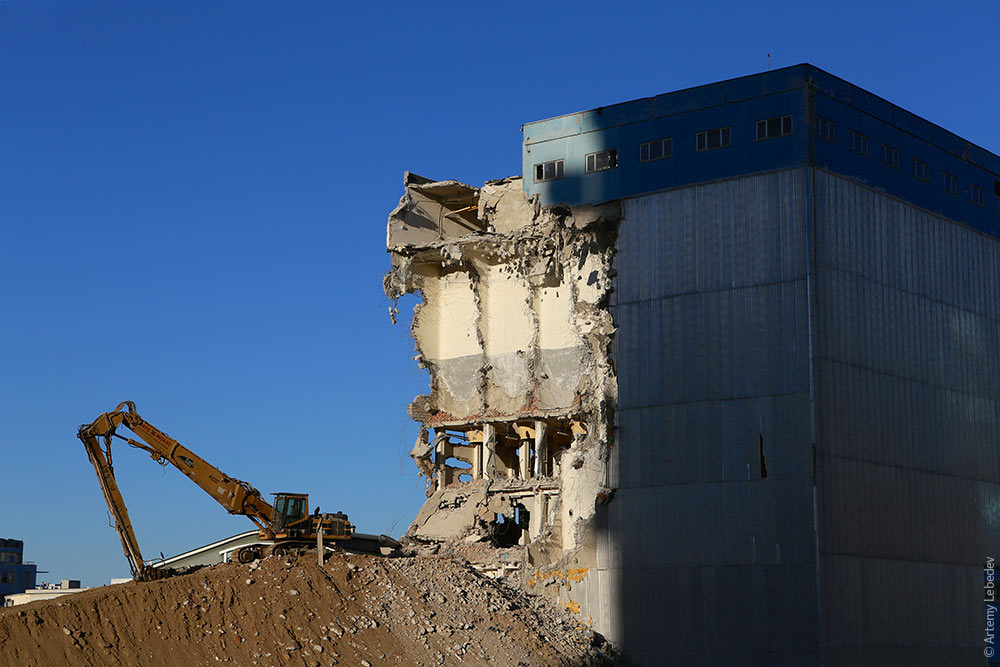 The school buses are minibuses with a mandatory decoration of yellow and black diagonal stripes on the back. 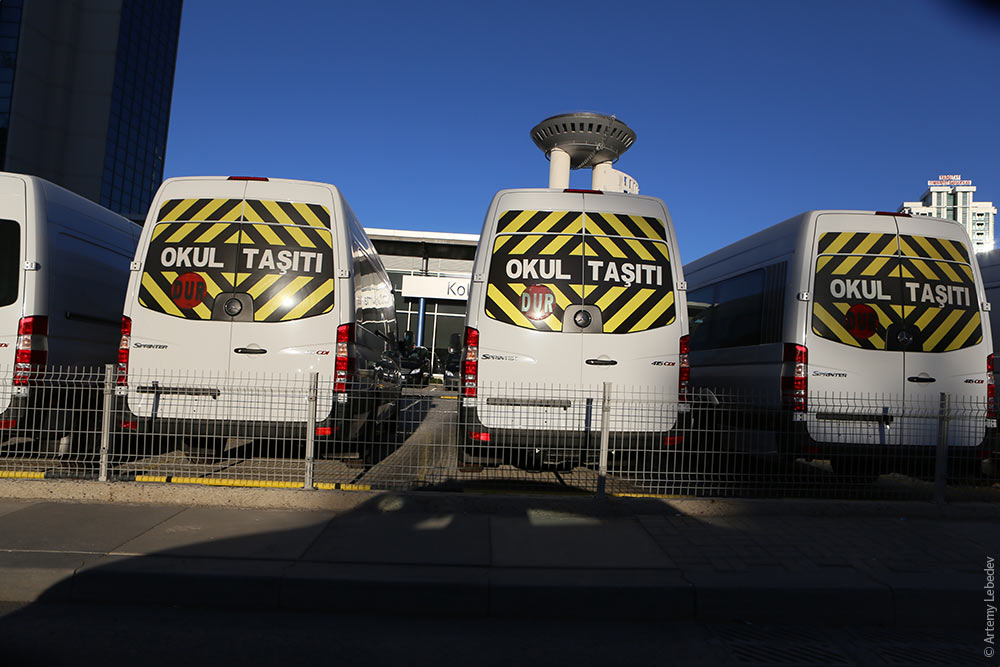 The traffic divider is decorated in a similar fashion. 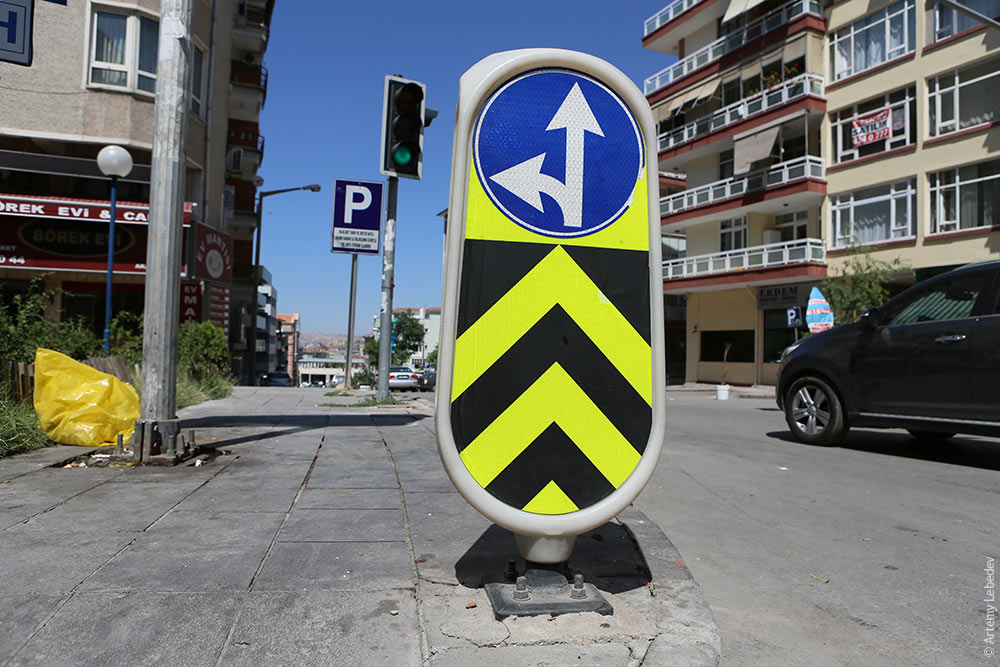 Bus stops have oval signs listing the bus route numbers and names. 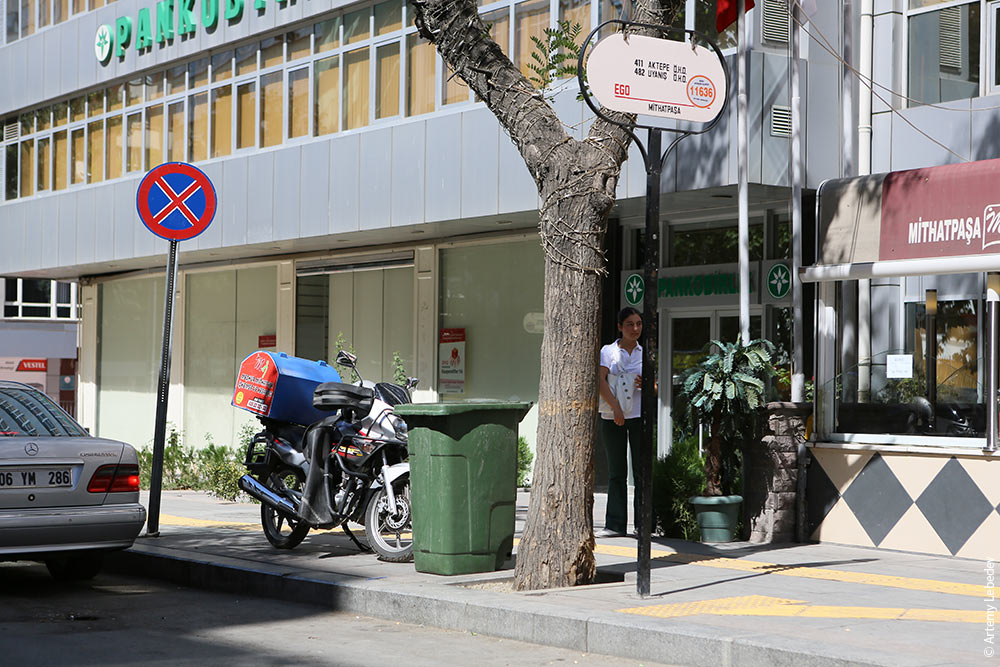 The new Turkish lira symbol already appears on half the price labels. 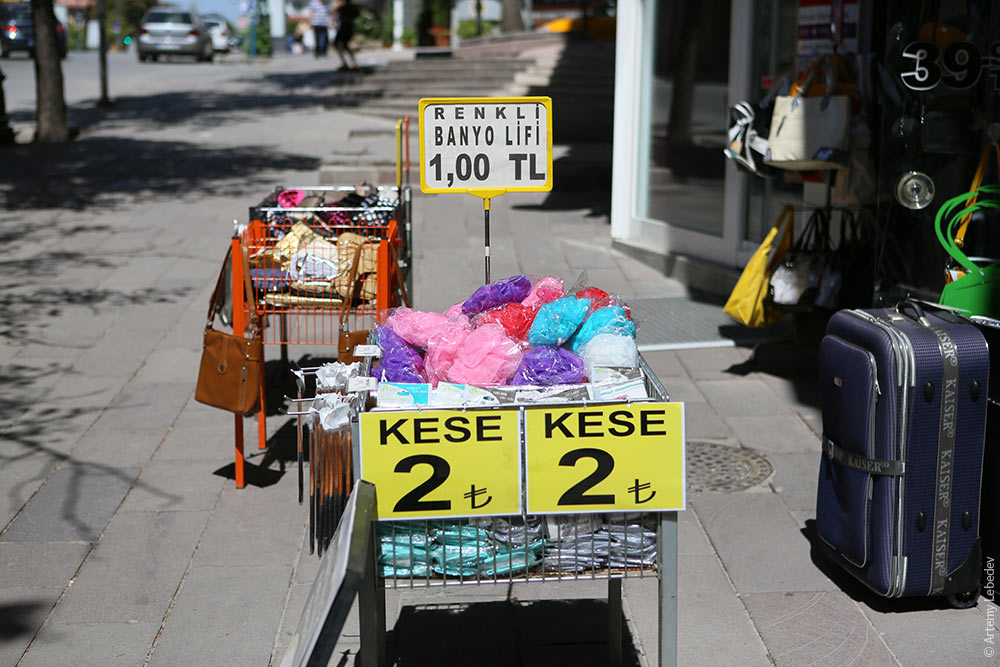 Remarkably, the main bulk of Ankara’s real estate developments resemble Tel Aviv: the same neighborhood setup, the same boom gates in front of every driveway. And the same lattice utility poles adorned with a spiky skirt to ward off climbers. 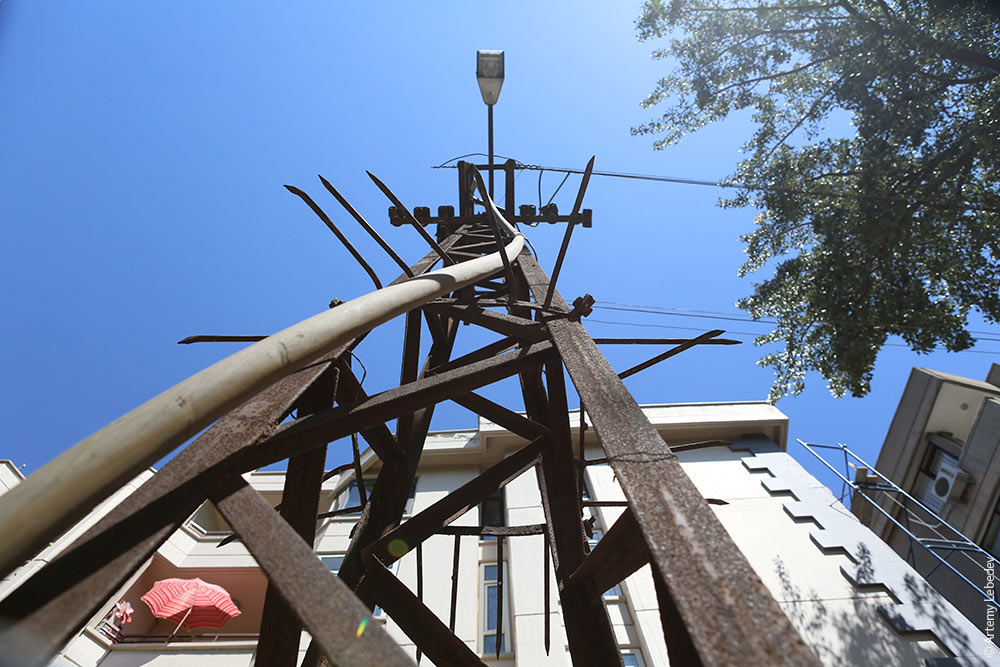 A lamppost adorned with what are probably capacitors and transformers in the form of round barrels. 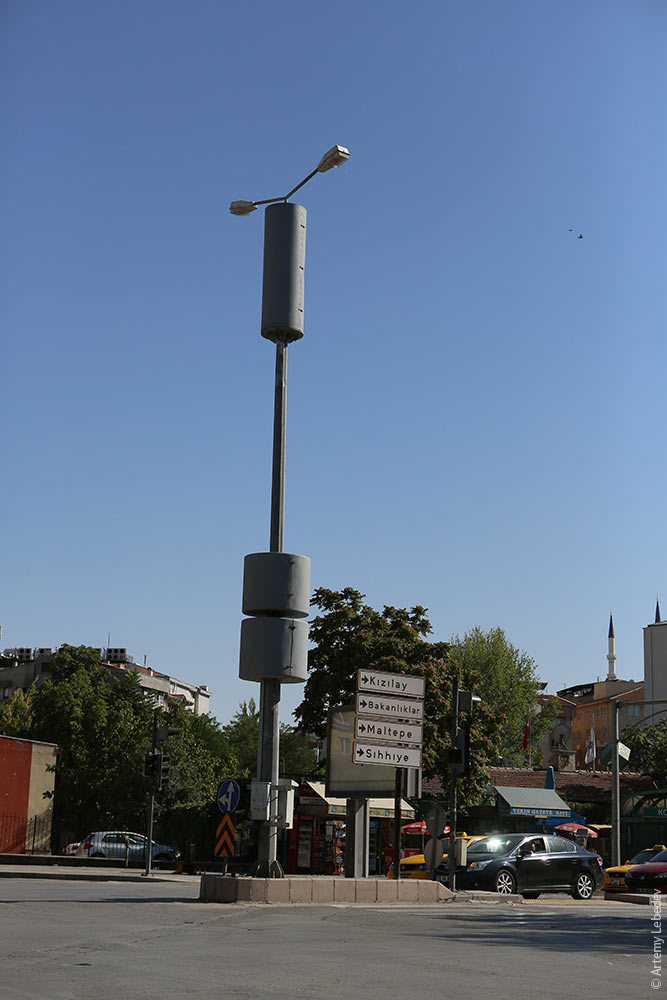 In some places, the poles are covered with special anti-poster nubs. 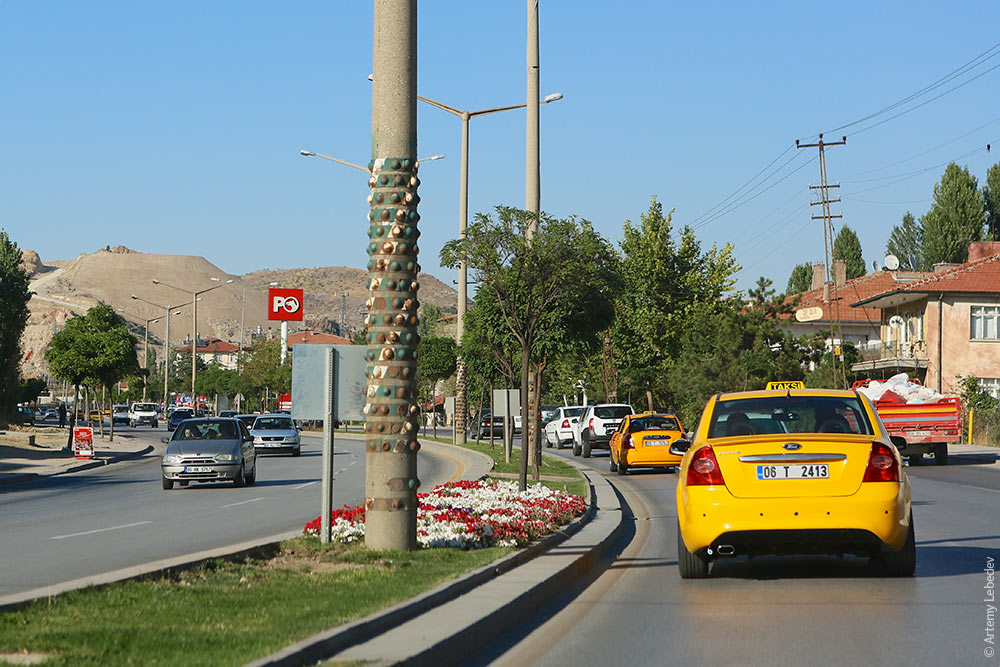 Old payphones.  New payphones. 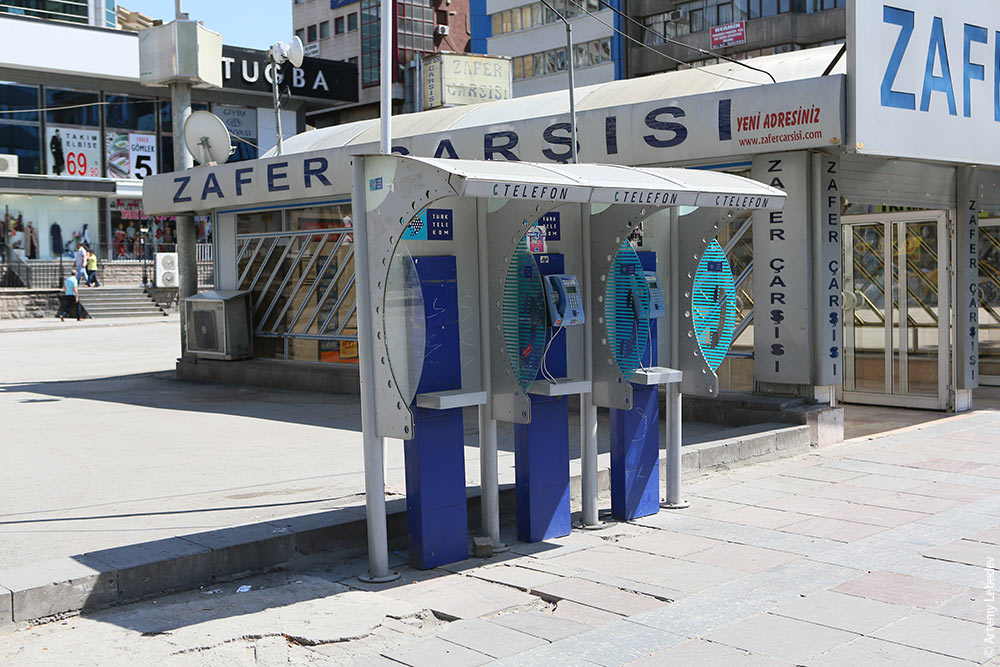 A hydrant. 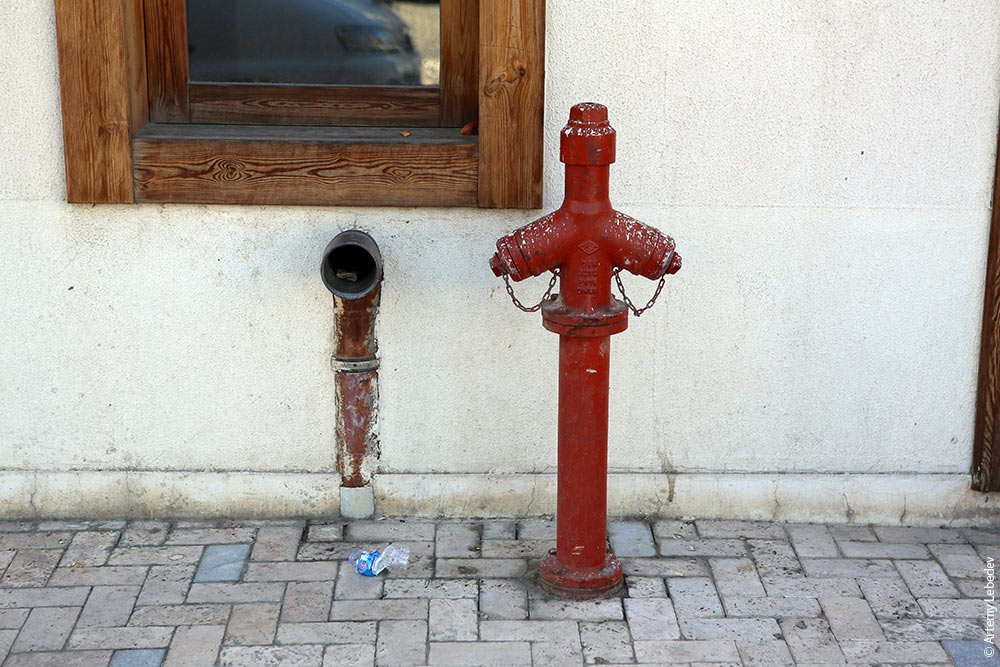 A manhole cover on a hinge. 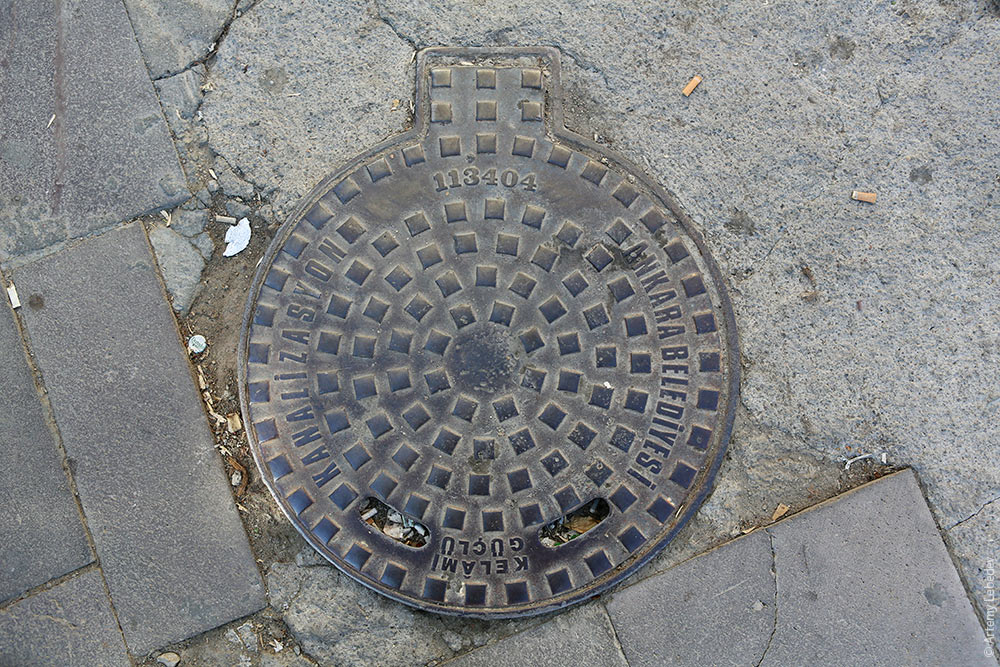 The traffic lights are the same as in Istanbul. 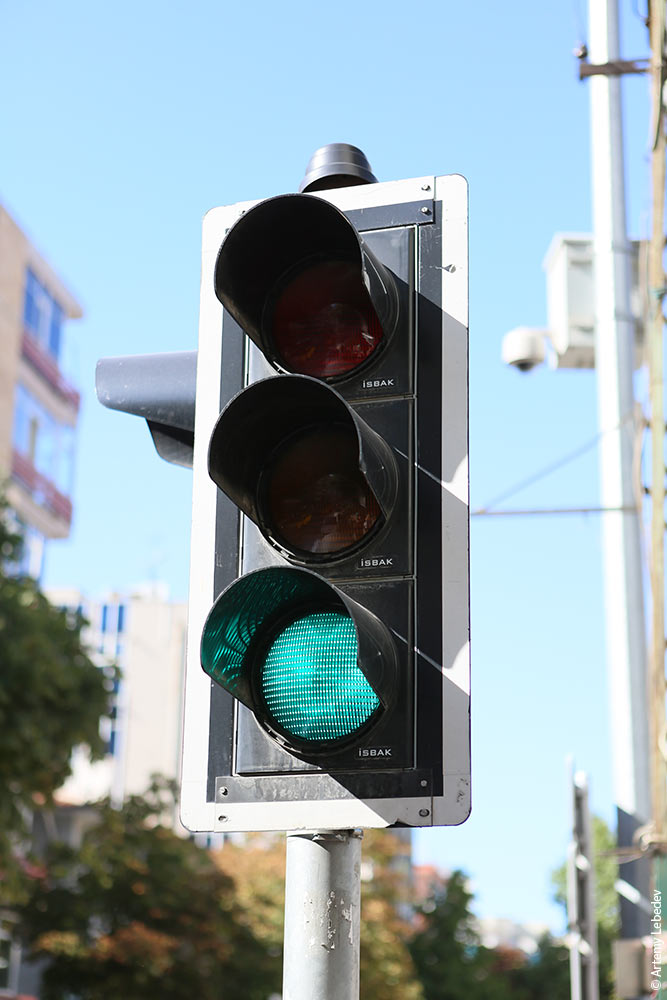 Road is slippery when it rains. 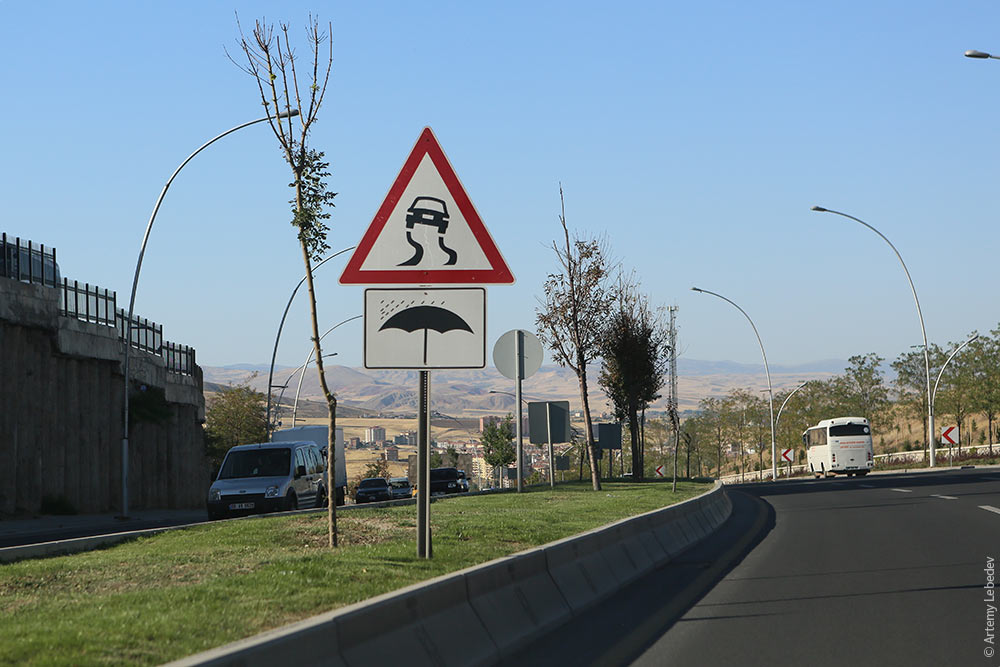 In general, the city is quite nice, although a sea or even a river would make a world of difference. 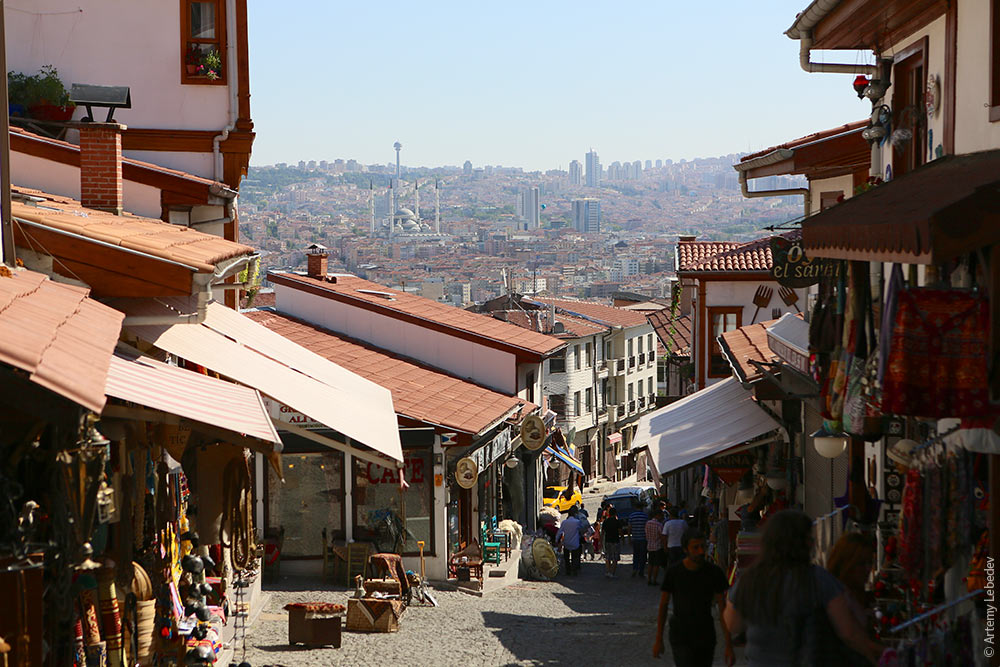 |